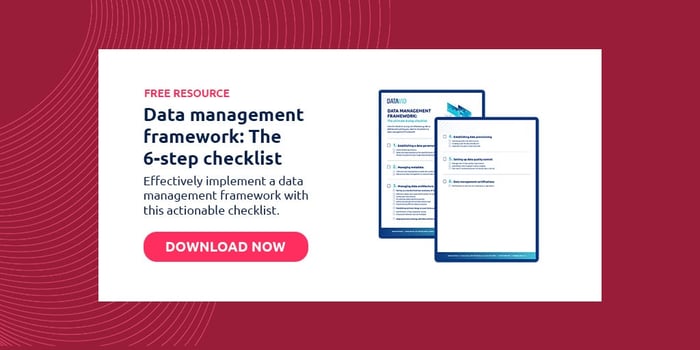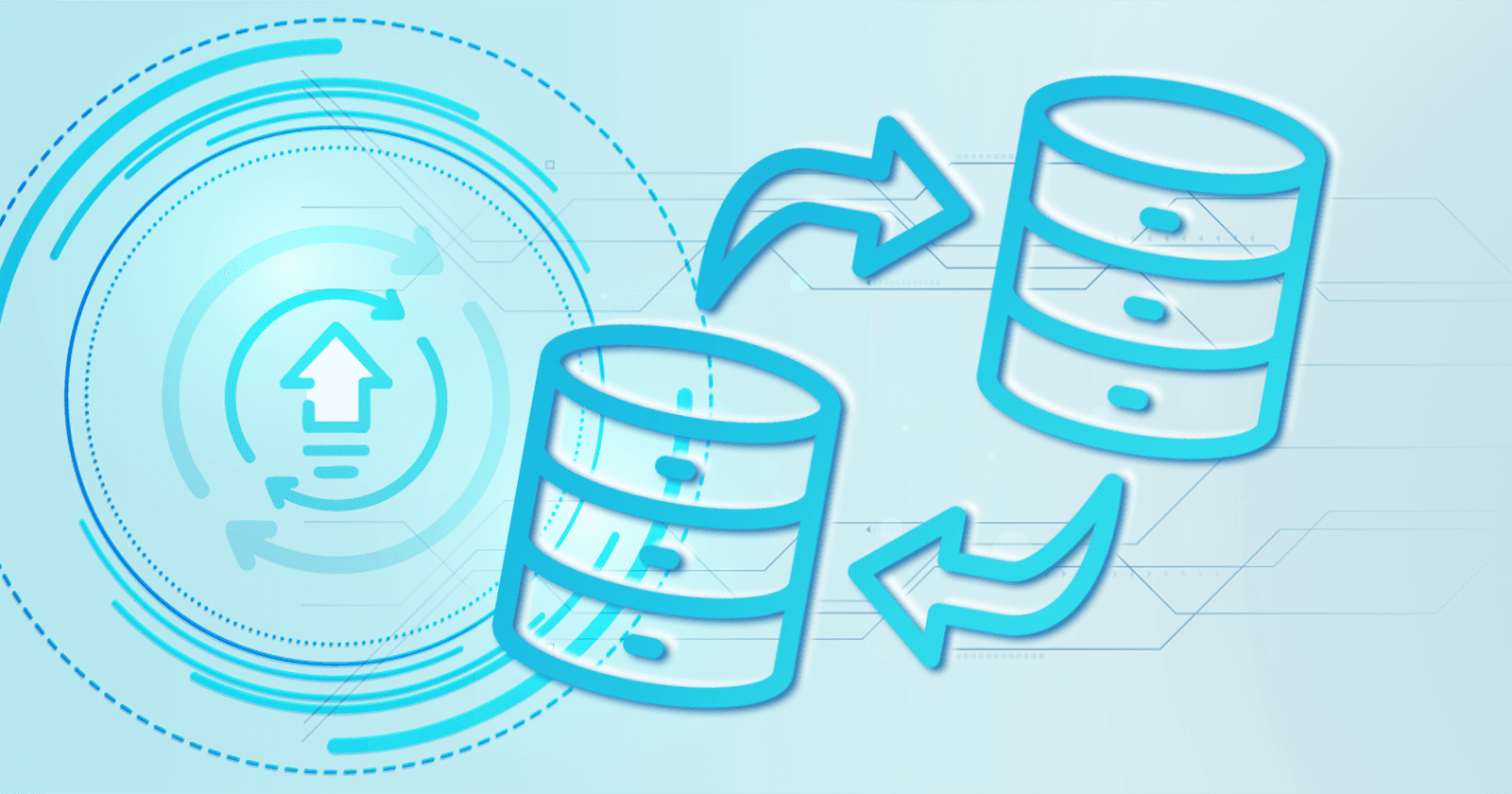7 minute read
Data-driven vs data-informed: Understanding the difference
Companies use data to inform their decisions, saving time and money. Compare data-driven vs data-informed approaches and learn which is best for you.
Table of contents
"Data-driven" is a label that most companies like to associate themselves with.
Almost none call themselves "data-informed", but there's value in understanding the distinction. With the right analysis, data turns into a proactive tool that generates valuable insights for your business. Decisions based on these are the backbone of successful growth strategies.
In this blog post, we'll explore how you can extrapolate knowledge starting from these two approaches: data-driven vs data-informed. We'll look at the differences between them and explain how to think about deriving real-world insight from your data.
What does "data-driven" mean?
When you take a data-driven approach to making business decisions, you start your decision-making process from the data you collected and analysed in the first place.
This is true even when the data doesn't back your past experience, goes against your intuition, or seems erroneous—you use the data itself as the prime teller of what to do next.
This approach is based on the idea that data never lies.
(But—as described by Bob Fisch—this can be a logical fallacy)
Pure numbers and high-quality analytics can provide valuable insight and back your business decisions. In many situations, the data-driven approach is highly warranted.
For example, when an online store applies a data-driven approach, it can analyse its customers' purchase history and figure out which items they are likely to buy in the future. This helps the store send them relevant offers or serve the right ads.
In this case, it's an effective business strategy to use the data itself to inform what the customer will be offered next, as their history showcases interests and trends hard to surface otherwise.
Let’s look at another example. A furniture store conducts a customer survey to explore the possibility of offering furniture assembly services.
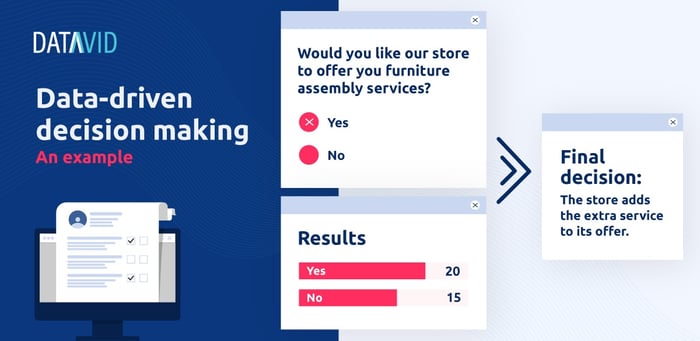
If the store decides to trust this one piece of information as the main driving force for offering a new service, they are adopting a data-driven mentality.
 If, instead, they first assess the costs of offering a new service, make educated guesses about the market need for said service, and then serve the survey as a sort of "business intuition check", they are adopting a data-informed mentality.
If, instead, they first assess the costs of offering a new service, make educated guesses about the market need for said service, and then serve the survey as a sort of "business intuition check", they are adopting a data-informed mentality.
(More on the data-informed approach in the next section)
By implementing a data-driven approach, a company chooses a strategy that's based almost entirely on the data itself—even if it goes against intuition.
By preventing personal bias, the data-driven approach is believed to save time and money while yielding predictable results. However, due to common logical fallacies (e.g. "quality" data in, therefore outcome out), it's not always the best way to revolve business decisions around.
Real-world example: Walmart

Source: Walmart
Back in 2004, when Walmart learned about an upcoming hurricane, they needed to figure out what items to stock before the storm came.
The company's analysts looked at the purchase history (460 terabytes of data) to figure out what the most popular items were when the last hurricane hit.
By stocking the necessary products before the hurricane arrived, they managed to achieve impressive sales and help Florida residents in the process.
What does "data-informed" mean?
Instead of focusing primarily on data to make business decisions, a data-informed approach uses other tools and resources, such as user research, personal experience, and third-party insights.
While data remains an important part of the decision-making process—it's not the only player on the field.
Rethink for a moment of the previous example of the furniture store.
While it's great that the majority of customers want a new feature, the added operational costs would be a burden for the business.
With this in mind, the store owner can lean on their own intuition and informal analysis to "block" the process from moving forward if considered too risky. Since the furniture is easy to assemble, offering an assembly service would only be seen as a "nice-to-have" that requires a strong premium to make sense financially.
A data-informed approach analyse data while drawing upon other relevant factors, using the results to help the business make an informed decision.
Consider the Walmart example above from a data-informed perspective.
While analysing data related to customer preferences, decision-makers and researchers can also implement personal insights and lean on community experience to figure out some of the products that would be most useful during the hurricane, on top of the ones suggested by historical analytics are the most useful during the hurricane.
The data-informed approach blends human intuition with data to provide educated and experienced-based results. In more nuanced or sensitive cases like a disaster response or large business shifts, this type of decision-making wins over data-driven decision-making.
Real-world example: Airbnb

Source: Airbnb
When we think of Airbnb, we imagine its current platform, modern and fast, but it was not always so. If you accessed the platform in the beginning this was what you saw:
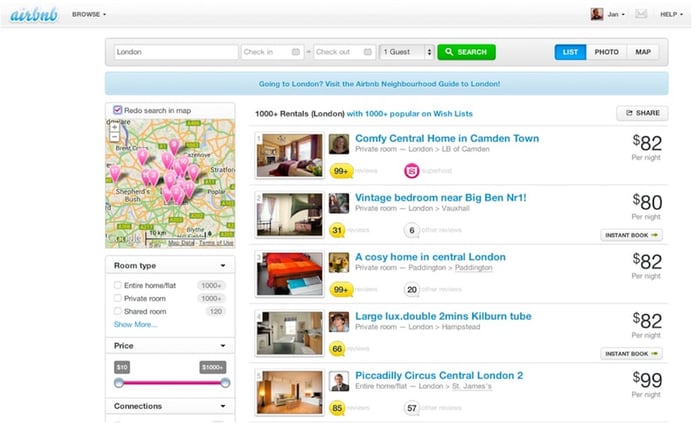
Source: Airbnb on Medium
It was basically a list.
Airbnb then realised that the best way to improve its service was to redesign its platform and conform it to the wants and needs of its audience. So, after some qualitative studies, Airbnb redesigned the platform, and this was the result:

Source: Airbnb on Medium
The second version of the design appeared more appealing than the original due to its increased use of listing photos, improved search map, and reduced impact of accompanying text.
This was achieved through a series of "data-informed" decisions that combined the team's expertise with the user research and the historic website usage data.
Data-driven vs. data-informed: Pros and cons
When it comes to making the best decisions, both data-driven and data-informed approaches can work. Each method comes with certain pros and cons.
Data-driven approach
Pros
The main advantages of the data-driven approach include:
- Absence of bias: when you focus on pure data, there isn't a place for bias. This can help you make effective decisions and avoid errors that occur due to misplaced intuition or personal insights.
- Transparency: when you need to analyse why a certain decision has been made, the information is transparent. You can always demonstrate the basis of data-driven decisions by showcasing the data.
- Responsibility: many decision-makers enjoy the opportunity to reduce the responsibility they have to handle daily. By making data-driven decisions, you are mostly relying on data. If such a decision doesn't help you achieve certain goals, you share liability with data and its quality.
- Proactivity: the data-driven approach can be highly proactive. You can use data analytics to predict future market trends or customer behaviour changes. If you need to predict the probability of a certain change, comprehensive data discovery and analytics tools can do it.
One of the main benefits of a data-driven approach is that it's always stable and available. While insights, experience, and intuition change over time, data always stay the same. As long as you practice effective data-gathering and management methods, you can rely on the information.
Cons
The disadvantages of data-driven data are:
- Dependency on data volume: if you have a small amount of data (as in the example with the furniture store), it's easy to make the wrong decision. While it may seem right according to the data, looking at the bigger picture would easily render it ineffective.
- Blind trust: when you are making data-based decisions, you are blindly trusting the numbers. While numbers don't lie, they can be erroneous. Data goes through a complex analytics process. Depending on the tools and approaches you use, it's easy to get the wrong insight with the right data. Without a human perspective, you could make a bad decision.
- Low-quality data: it's always possible to face low-quality data. Even if you use the most sophisticated data analytics tools, poor data quality and integrity could provide inadequate information and skewed insight.
Studies show that poor data quality results in social and economic losses that add up to billions of dollars. If you aren't 100% sure about the data quality, decisions based solely on this data could be erroneous.
Data-informed approach
Pros
The key advantages of the data-informed approach include:
- A look at the big picture: when you take a data-informed approach, you aren't focusing on data as the prime decision factor. This allows you to see a bigger picture that may influence your decision.
- Multifaceted approach: unlike the data-driven method, the data-informed approach digs into multiple resources before helping you make a decision. The more information you have, the more informed your decision is.
- Creativity: making decisions isn't all about data, analytics, and predictions. It's also about creativity. In many situations, taking a creative approach to solving a problem could be more effective than making a data-based decision.
Overall, the data-informed approach is more comprehensive. It gives you a wider range of elements to base your decision on.
Cons
The main disadvantages of the data-informed approach include:
- Bias: personal bias is an unavoidable part of any decision-making that goes beyond data-driven insights. In some cases, it can be an advantage. In others, a serious disadvantage, especially when you start cherry-picking data to support your decision.
- Confusion: when you have to rely on multiple resources to make a decision, you could spend more time on it. Meanwhile, the confusion that accompanies a wide variety of elements could eventually lead to the wrong conclusion.
In some cases, you could find that data leads you to one decision while your team's opinions and perspectives warrant another. Figuring out which decision to make in this situation can be complicated.
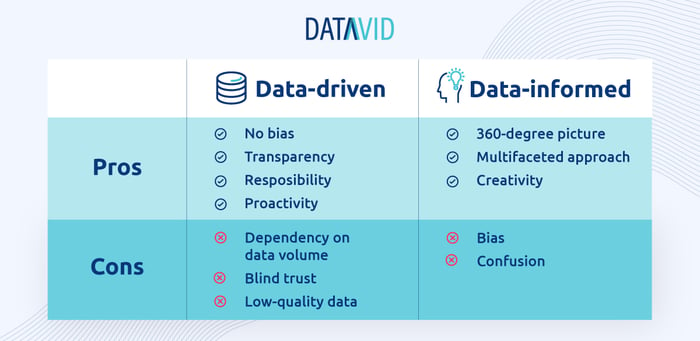
Which is the right data approach for your business?
Factors such as company culture, industry, and business goals can influence the decision-making process. Choosing the right approach to decision-making depends on several factors, including:
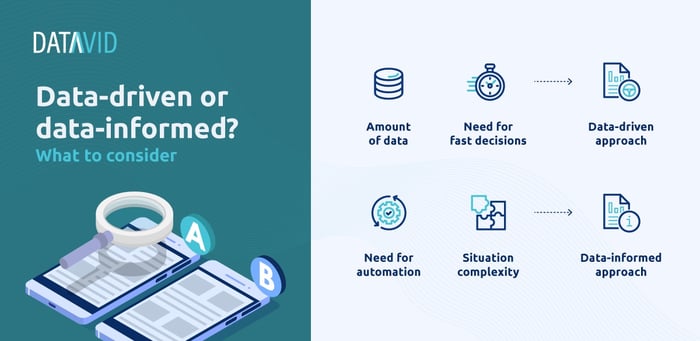
- The amount of data: if you have a small amount of data, you may want to lean toward data-informed decisions.
- Need for automation: if you need to automate the decision-making process due to the need for frequent decisions, the data-driven approach works best.
- Situation complexity: when complex situations warrant creative solutions, you may want to consider the data-informed approach.
- Need for fast decisions: if you have a sufficient amount of information and need to make a fast decision, you can take advantage of the data-driven approach.
To sum things up, data-driven and data-informed approaches can both be useful for effective decision-making. While the former focuses on data as the primary indicator of where to go next, the latter also takes full advantage of human insights and experience.
Business owners can leverage both data-driven and data-informed approaches depending on data asset availability, analytic tool quality, and current decision-making goals.
Frequently Asked Questions
What is data-driven vs intuition driven?
Data-driven approach involves using data and analysis to make – for example - informed decisions, while intuition-driven approach relies on gut feelings and personal judgment. The former is often used in fields such as finance and marketing, while the latter is more common in creative fields.
What is the difference between data-driven and data-inspired?
Data-driven approach relies entirely on data and statistical analysis (for example to make decisions), while data-inspired approach uses data as a starting point and combines it with human insights and creativity to drive decision-making. The first approach is more rigid and objective, while the second is more flexible and subjective.
What is meant by data-driven?
Data-driven refers to the process of making decisions based on objective and empirical evidence gathered through data analysis, rather than on subjective opinion or intuition. The approach relies on data to inform decision-making and ensure accuracy and precision.

